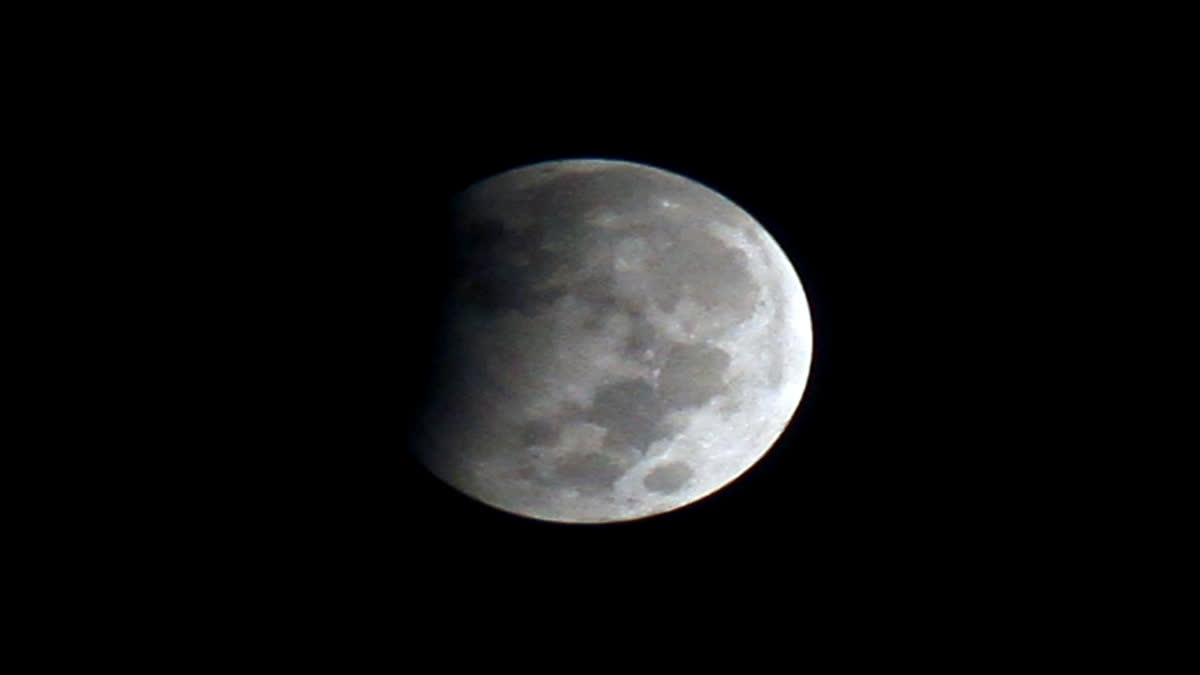Hyderabad: Get ready for a partial lunar eclipse and supermoon, all rolled into one. The spectacle will be visible in clear skies across North America and South America Tuesday night and in Africa and Europe Wednesday morning.
A partial lunar eclipse happens when the Earth passes between the sun and moon, casting a shadow that darkens a sliver of the moon and appears to take a bite out of it. Since the moon will inch closer to Earth than usual, it'll appear a bit larger in the sky. The supermoon is one of three remaining this year.
The partial lunar eclipse will begin at 8.41 pm EDT and the maximum point of the eclipse will occur at 10.44 pm EDT. The partial lunar eclipse will end at 12.47 am EDT on September 18. The total duration of the partial lunar eclipse is four hours and six minutes.
"A little bit of the sun's light is being blocked so the moon will be slightly dimmer," said Valerie Rapson, an astronomer at the State University of New York at Oneonta.
The Earth, moon and sun line up to produce a solar or lunar eclipse anywhere from four to seven times a year, according to NASA. This lunar eclipse is the second and final of the year after a slight darkening in March. In April, a total solar eclipse plunged select cities into darkness across North America.
No special eye protection is needed to view a lunar eclipse. Viewers can stare at the moon with the naked eye or opt for binoculars and telescopes to get a closer look. To spot the moon's subtle shrinkage over time, hang outside for a few hours or take multiple peeks over the course of the evening, said KaChun Yu, curator at the Denver Museum of Nature and Science.
"From one minute to the next, you might not see much happening," said Yu. For a more striking lunar sight, skywatchers can set their calendars for March 13. The moon will be totally eclipsed by the Earth's shadow and will be painted red by stray bits of sunlight filtering through the Earth's atmosphere.
Where you can watch the Partial Lunar Eclipse in India
In India, one can watch the partial lunar eclipse in parts of Punjab, Haryana, Rajasthan, Maharashtra, Karnataka, Tamil Nadu and Kerala. It can be watched in Gujarat too. Among the prominent cities where the partial lunar eclipse can be watched are Amritsar, Bhatinda, Thiruvananthapuram, Ernakulam, Kollam, Malappuram, Kannur, Mangalore, Udupi, Shivamaggoa, Davangere, Huballi, Belgavi, Vijaypura, Kolhapur, Sangli, Satara, Solapur, Panjim, Pune, Mumbai, Nashik, Kalyan-Dombivili, Malegoan, Valsad, Surat, Dhule, Jalgaon, Vadodara, Rajkot, Junagarh, Porbandar, Ahmedabad, Gandhidam, Jamnagar, Palanpur, Udaipur, Bhilwara, Pali, Beawer, Bikaner, Kota.
The other two types of Lunar Eclipse:
The other two types of lunar eclipse are - Total lunar eclipse, in which the earth's shadow is cast across the entire lunar surface and the penumbral lunar eclipse. In a penumbral lunar eclipse, the faint outer part of Earth's shadow is cast across the lunar surface. This type of eclipse is not as dramatic as the other two and can be difficult to see.



